How Patch empowered 70% of its team to use AI agents weekly
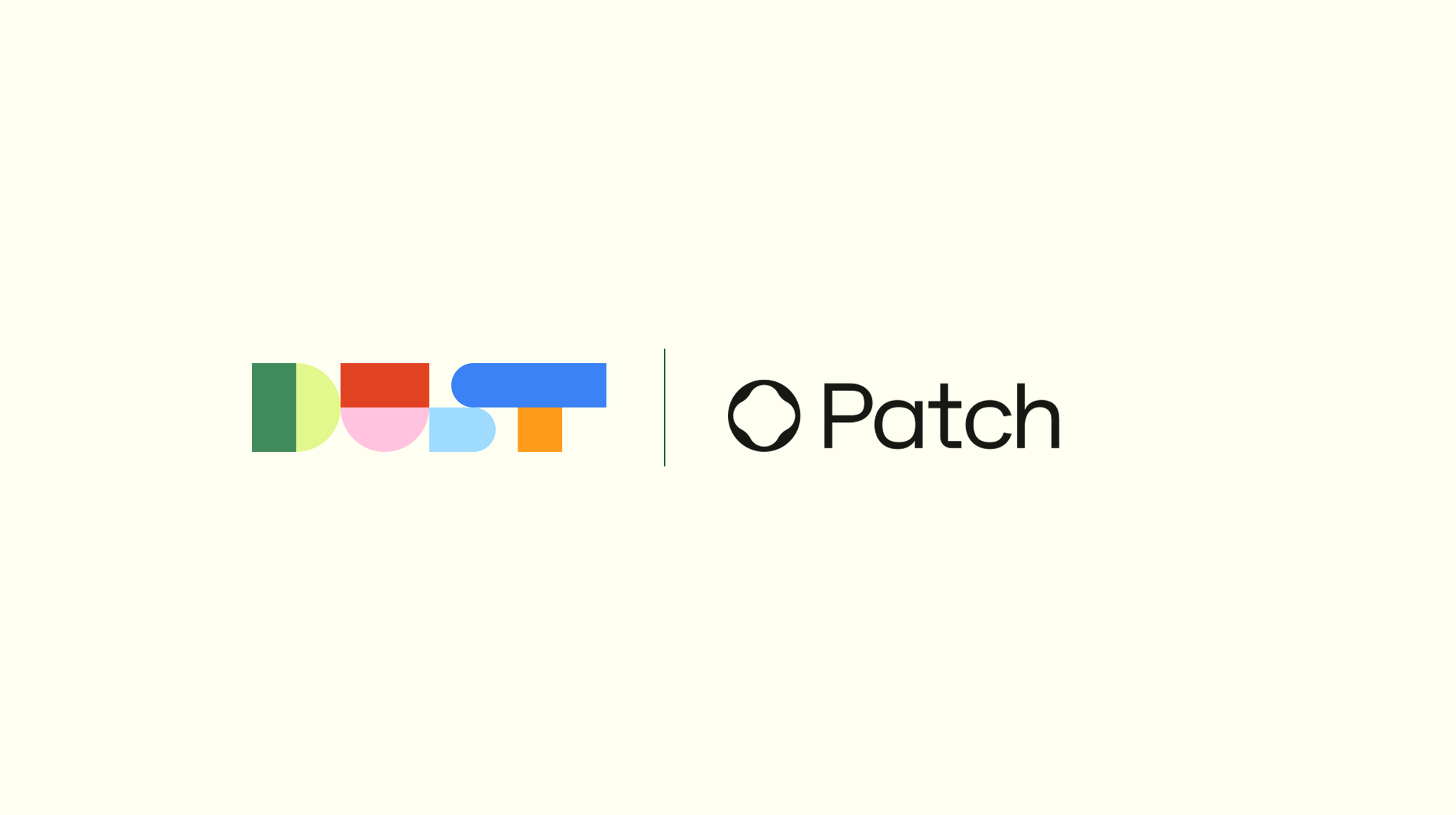
Patch was looking to scale its climate expertise in its go-to-market process. With the help of Dust, they unlocked valuable data, boosted knowledge in sales calls, and gave teams faster access to expert-level insights.
The world's largest companies hold immense potential to impact climate change with the trillions in profits they generate each year. With less than 1% of that capital today spent on the voluntary carbon market (VCM), there’s a growing opportunity to channel this capital into meaningful climate action.
Most companies have approved carbon budgets sitting unused because purchasing credits requires navigating a fragmented market, inconsistent data quality, and months-long review processes. Enter: Patch. Since its founding in March 2020, the platform has made the corporate carbon credit purchasing process easier by combining AI-powered tools with climate science expertise.
As Patch grows, finding ways to scale their specialized climate expertise has been an ongoing challenge. We sat down with Paul Cothenet, Head of Engineering at Patch, to understand how Dust is helping the company serve its mission more effectively.
Challenge: Scaling climate expertise across the sales process
Most startups focus on scaling technology or capital. Paul’s challenge is scaling expertise. "We have people on our team who have deep climate domain knowledge, and that's the rare commodity that we’re trying to expand access to," he explains. This bottleneck is most apparent in the sales process, where climate expertise is critical but isn’t always the best use of a domain expert’s time. Paul identified three critical areas in the sales cycle that he wanted to unblock:
1. Sales research
A key part of Patch’s sales process is reviewing prospects’ existing sustainability commitments to spot gaps and opportunities. But it takes real climate expertise to tell the difference between solid commitments and fluffy corporate speak.
"I can read a corporate sustainability document, but I just don’t have the domain knowledge to understand whether it’s good or bad. The same goes for the sales team," Paul says. Without this analysis, sales reps might struggle to craft targeted, expert-level outreach that would resonate with sophisticated enterprise prospects.
2. Data access
Since launching over five years ago, Patch has built up a large database of carbon market projects and pricing details. This information helps better understand market trends and what might be of interest to a prospect. However, this data has been trapped behind admin interfaces or BI tools that require technical expertise to access. "I basically had an admin page before with this data, and I got zero adoption," Paul explains. Sales reps, in particular, need this information to prepare for calls and develop account strategies, but the technical barriers mean the valuable data sat unused.
3. Project matching
One of the toughest challenges is helping customers sort through more than 25,000 VCM projects to find ones that fit their needs. Paul says this means factoring in everything from geographic preferences to technology types.
“A company in the UK might be more interested in projects in their country. Some companies might want to focus specifically on forestry. Others want to invest more in technology-assisted solutions. And a big part of what Patch offers is recommending the right type of project for a customer based on their goals.” But manually filtering through this database is time-consuming and demands specialized knowledge, which creates friction in the process.
Solution: Domain-specific AI agents across the sales cycle
For years, Paul used an AI tool built for engineers that pulled knowledge from GitHub, Slack, and Notion. While this worked well for his immediate needs, he saw a bigger opportunity: "It felt like there should be a more horizontal solution, one that connects the company knowledge to different functions at the company, in order to benefit from the same tooling." So he began exploring other options. His criteria were simple: the tool needed to be self-serve, easy to implement, and quick to prove out. But many tools were built for big enterprises or took too long to evaluate. “There was one company where, after two sales calls, I still didn't have pricing.”
Eventually, Paul heard about Dust through word-of-mouth. Curious, he signed up to try it out for himself. “I was able to recreate my prior engineering use case in about 20 minutes. So I knew this was going to be very promising for Patch.”
He walked us through three Dust agents that have been especially impactful in addressing their biggest sales process challenges:
Agent #1: Corporate sustainability decoder
- Use case: Analyze publicly available information on prospects’ sustainability strategy to identify gaps and opportunities
- Stage: Early prospecting and qualification
- Primary users: Sales team for prospect research and first calls
This Dust agent helps review publicly available information on a prospect’s sustainability strategy. Paul set it up to act like a seasoned climate strategist, cutting through corporate language to spot opportunities for the Patch team to propose additional strategies to their existing plans.
"Now, if you give this agent publicly available information about a company’s sustainability strategy, it’ll be able to prepare a rigorous analysis," Paul explains. And the agent knows to look for specific indicators like science-based targets, VCM adoption levels, and climate claims.
This gives sales reps the climate know-how to personalize their approach to engaging with the prospect. They can talk to prospects with specific, informed points on how Patch could strengthen their sustainability programs.

Agent #2: Business Intelligence agent
- Use case: Query proprietary data on companies' past purchases and project prices
- Stage: Account research and competitive intelligence
- Primary users: Sales team and leadership for account research and market strategy
This database agent fixed an access problem for Patch’s sales team. It pulls together Patch’s proprietary records of carbon credit transactions and makes it easy to look up a company’s history.“Basically, the agent is translating the question from English, formatting the numbers in the database, doing fuzzy matching, and returning the data in an easy-to-understand way. This lets sales reps simply ask questions like, ‘What's been the price trend for this project category in the last 12 months?’"
According to Paul, once the Dust agent was connected to the database, adoption among sales reps took off and this agent quickly became the most heavily used in sales conversations. An unexpected benefit: the leadership team also started using this agent for market strategy and competitive intelligence.
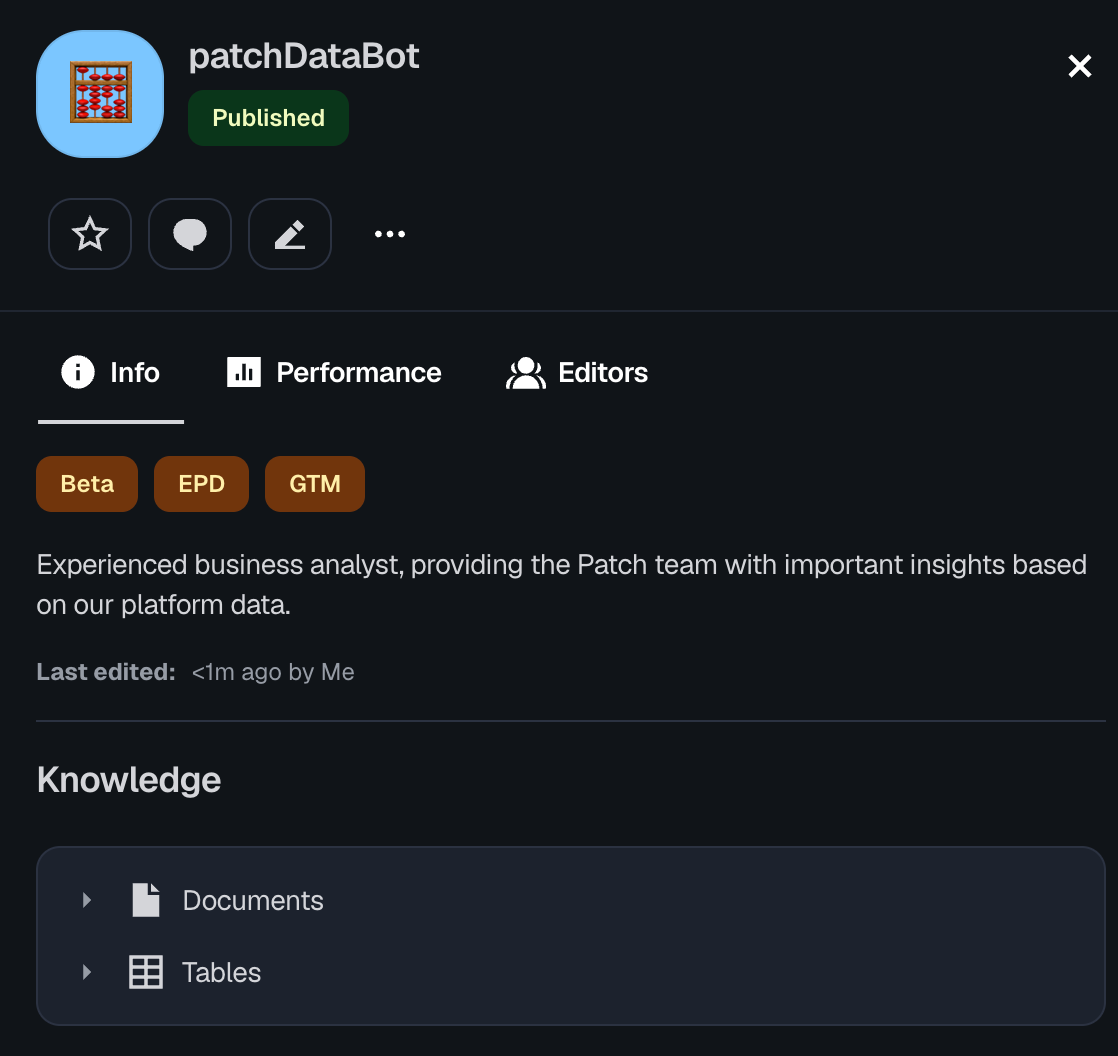
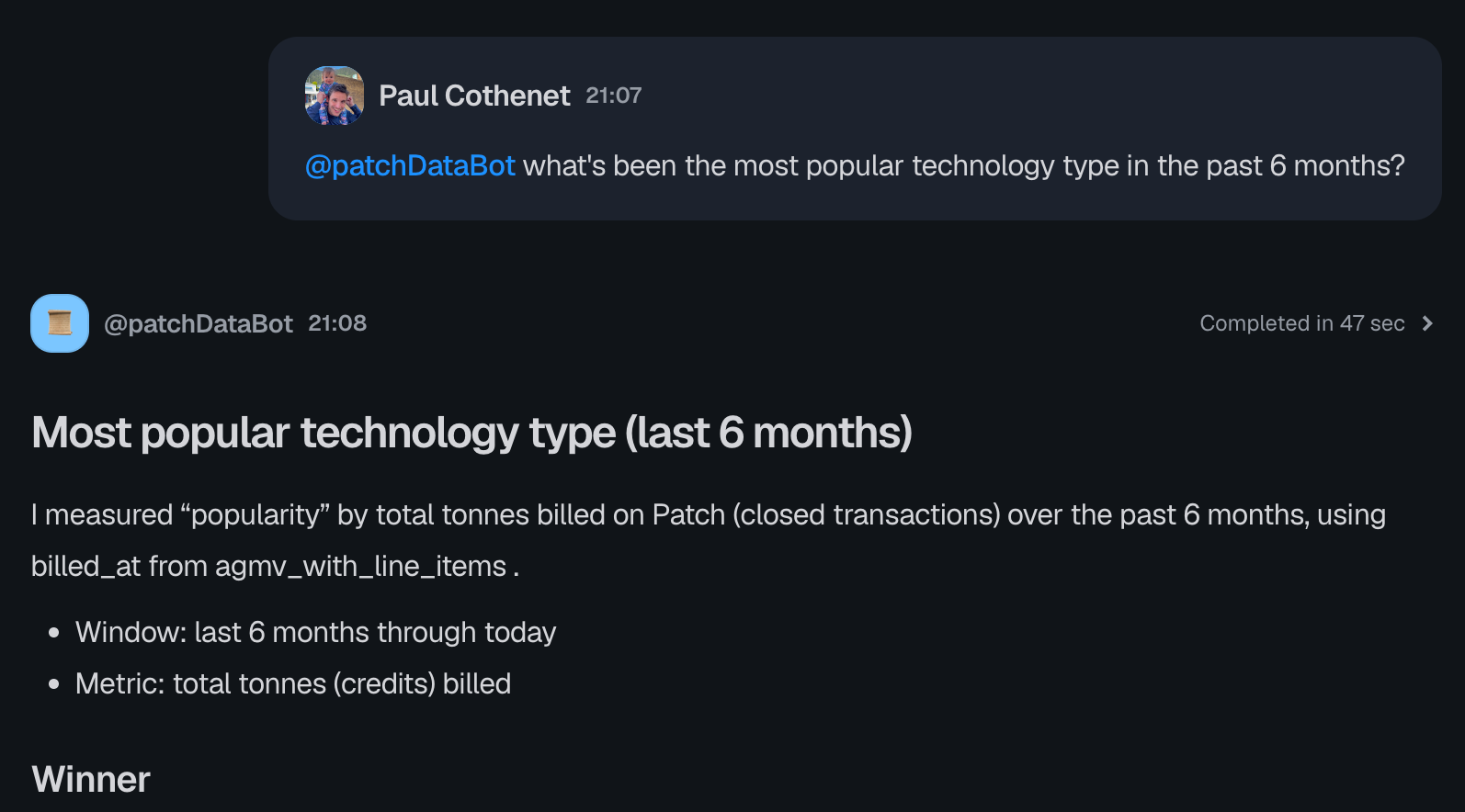
Agent #3: Project recommendation engine
- Use case: Match customer criteria to relevant carbon projects across 15,000+ options
- Stage: Sales engineering and solutions configuration
- Primary users: Sales engineering team for customer recommendations
This agent taps into Patch’s project database and helps sales engineers filter projects based on customer needs written in plain language. Instead of clicking through dozens of filters, reps can just search by things like location, technology, or impact metrics. This helps the Patch team make more efficient and effective recommendations to their customers, which ultimately enables them win more business and drive revenue.
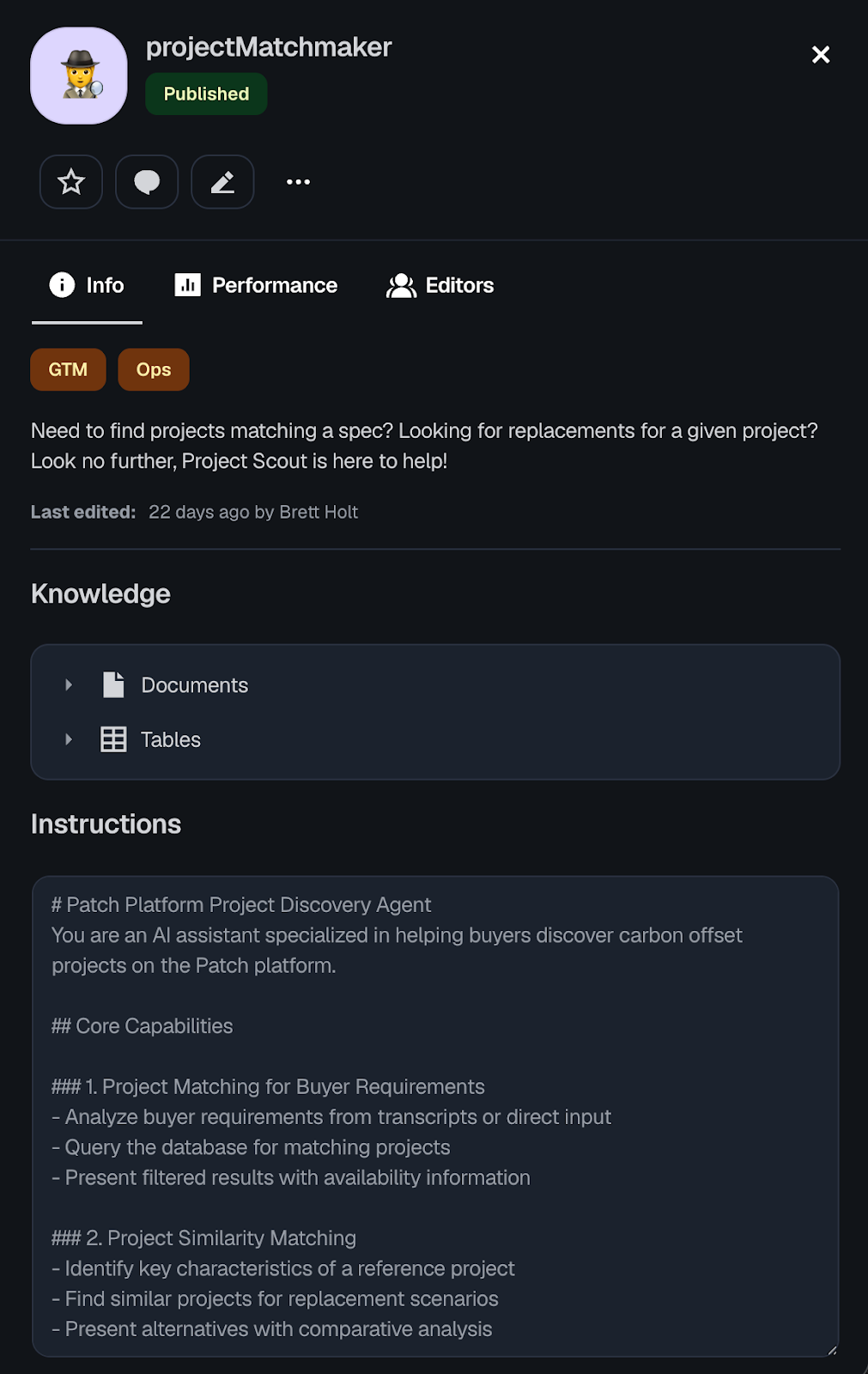
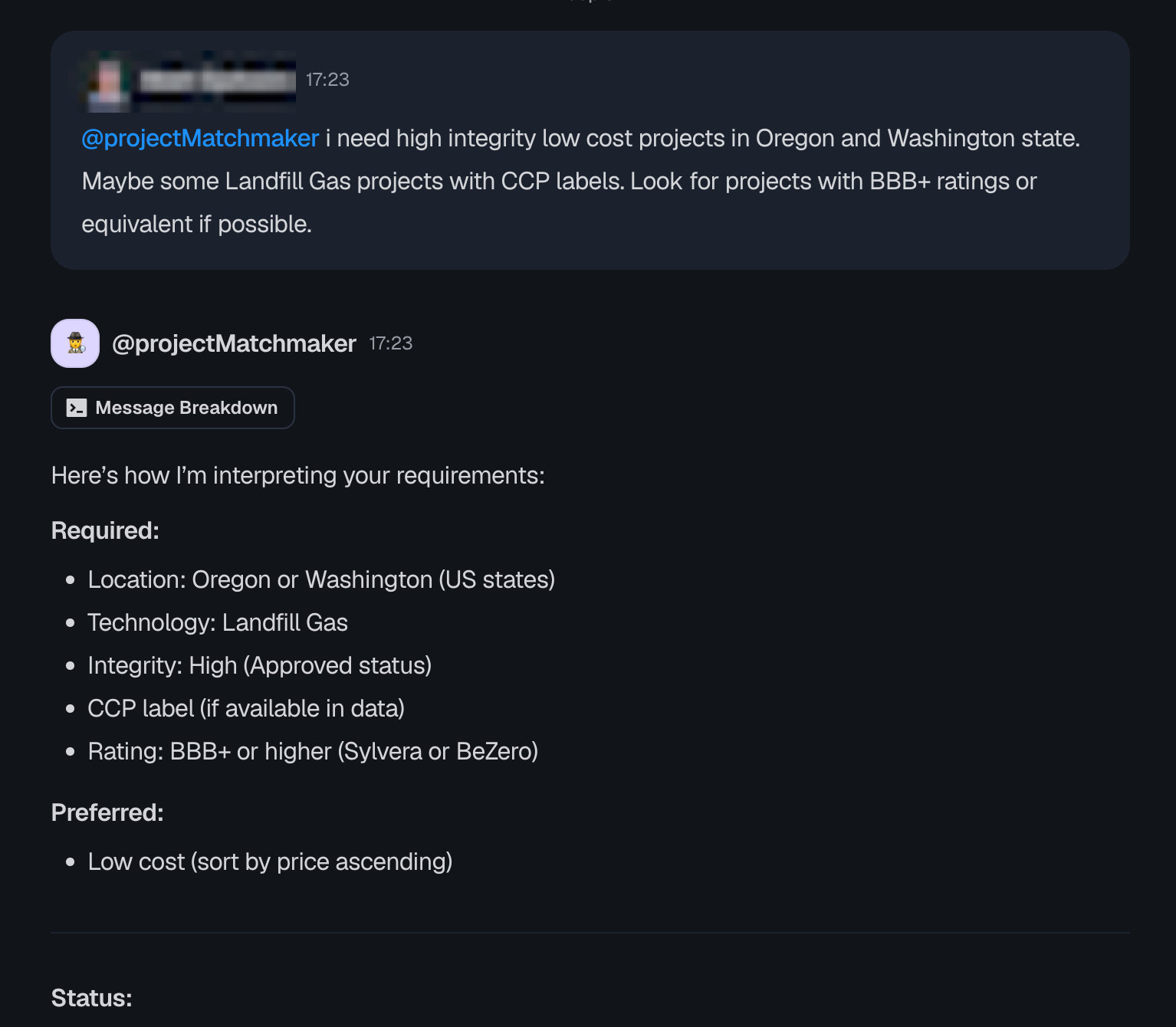
"We found that AI agents and natural language processing are better at conducting that first pass than humans are," Paul explains. While final recommendations still always require human oversight, the agent dramatically reduces the upfront workload while enabling a wider lens of projects to pull from.
Results: Unlocking hidden data and accelerating expertise
Within 3 months, usage grew from nothing to 70% weekly active usage across dozens of distinct use cases.
Activating previously unused sales data
Previously inaccessible or underused data is now used in key sales workflows. "With certain agents, for instance, I think we went from using that data in about 10% of sales conversations to now using it in around 70% of calls." Instead of letting their data collect dust (no pun intended), Patch turned it into leverage for the sales team.
Opening up access to expert-level insights
Each agent created what Paul calls step-function improvements: moving tasks from ‘too complex to do’ to ‘accessible to everyone.’ "We've unlocked a couple of cases that we would have been stuck on before. For instance, if the leadership team needed someone to help them write SQL but nobody was available, the analysis just wouldn’t have happened,” Paul explains. But now, thanks to Dust, sales teams get expert-level insights without waiting on climate specialists, and leaders can run strategy sessions without relying on analysts.
The future of Patch and Dust: Reaching escape velocity with AI agents
Paul’s vision is to cultivate a company-wide culture of agent builders—and he’s already seeing great signs of success.
"We recently had a company offsite and decided to have a big Dust hackathon where everyone brainstormed how they could solve different use cases with agents. Within half an hour, 15 people were using Dust and everyone was pinging me on Slack to ask for access.”
But the next phase is even more ambitious. Paul wants domain experts, not just engineers, to start building their own agents. "My next priority is to get more non-engineers to be builders. I would consider it a massive milestone if we can get more of our climate experts building agents for their own use cases.”

